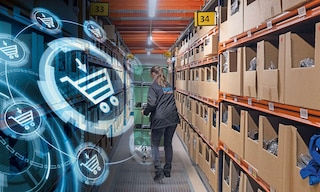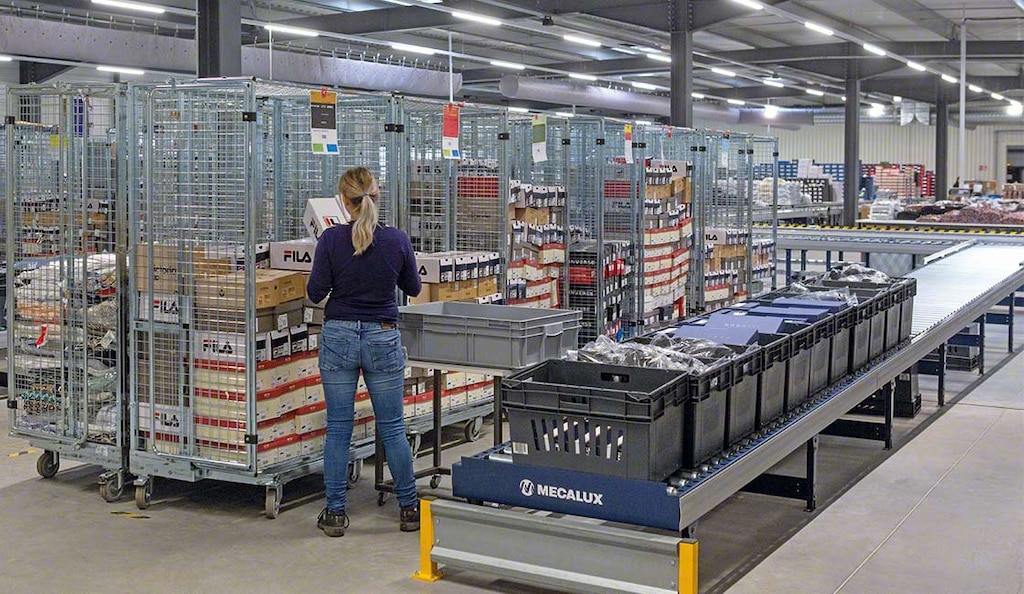
E-commerce logistics and key operations
E-commerce has been steadily gaining in popularity since Amazon began selling books via the internet in 1995. E-commerce logistics is facing increasing challenges to meet a growing demand that reached its historical peak with the Covid-19 pandemic. The virus forced the world into lockdown, causing many physical stores to shutter their doors permanently.
What is e-commerce logistics?
E-commerce logistics encompasses the methods and means necessary for companies to distribute their products to online consumers as efficiently as possible. It’s the process of planning, executing, and overseeing the procurement, storage, and transport of goods to end customers’ homes or places of work.
A McKinsey study anticipates that by 2025, a quarter of all global sales will be made online. This trend is on the rise: in 2021, at the height of the Covid-19 crisis, e-commerce sales had already reached 20%. This buying and selling system is the primary distribution choice for new companies devising long-term business strategies.

Why is logistics so crucial in e-commerce?
E-commerce is growing in tandem with the population’s increased use of the internet. The first touchpoint between the public and brands typically occurs online. This is especially true for enterprises focusing on communication plans, search engine optimization (SEO) strategies, and social media. Rather than looking for a location to rent or purchase, the business plan is geared towards establishing a strong online presence and acquiring customers through that channel.
E-commerce logistics is becoming more and more relevant. It’s characterized by small loads and packages. Often, users are unknown, numerous, and demonstrate low levels of loyalty. Flows of goods tend to be irregular and complex due to fluctuating demand that’s difficult to predict. For those reasons, it’s advisable to automate the organization of your logistics center to handle potential peaks and take advantage of sales opportunities.
3 pillars of e-commerce logistics
E-commerce logistics is an organizational process comprising several aspects, namely:
- Storage. This involves the receipt, verification, and internal transport of goods and their custody prior to order picking and shipping. E-commerce warehouses such as those of Spartoo — which reach a combined surface area of almost 5.7 acres — manage online sales of up to 10,000 pairs of shoes a day.
- Information systems. Coordinating the high distribution volumes originating from the internet requires infrastructure superior to that of small establishments. To meet such demand — whether you’re a retailer or a logistics service provider — it’s best to equip yourself with tools such as a warehouse management system (WMS). This software enables you to control all movements and operations in your facility. One example is Easy WMS, which has optimized the logistics operations of e-commerce businesses such as Gibon in Slovenia, Espace des Marques in France, Jolly Softair in San Marino, and Zacaris in Spain.
- Last-mile delivery. The third and final stage of e-commerce logistics is order shipment and distribution. To improve this phase, you should closely examine the processes that take place before product distribution. These include packing and labeling, route and schedule planning, and the optimization of spaces such as the warehouse’s outbound area. Digital solutions such as our Multi Carrier Shipping Software orchestrate all processes prior to order distribution in warehouses like those of Stand-Privé.com in France and Padel Nuestro in Spain.

Key ecommerce logistics operations
In a globalized world, inadequate logistics infrastructure does not go unnoticed. The subpar organization of an e-commerce platform is bound to become a topic of conversation among users. After all, this is a central aspect of their shopping experience and the basis of their overall satisfaction. There are 7 operations to take into account and that could make or break your e-commerce business.
- Warehouse design. The layout of this space is closely linked to the way in which processes will be carried out. The more organized and interconnected the areas, the simpler and shorter the internal routes of both materials and operators.
- Goods receipt. The arrival of items at your facility is an opportunity to properly coordinate product flows. To do so, you should plan receipts, set up procedures for operators to follow, and verify the condition of the goods. In e-commerce logistics, it’s typical to apply cross-docking, whereby items remain in the warehouse for a very short time before being shipped. While this strategy avoids having to place goods on racks or shelves, it calls for smooth coordination between all parties.
- Stock control. Knowing how much stock you have is essential for maintaining your reputation as an e-commerce retailer and managing customer expectations. In a highly competitive environment, delivery times can motivate buyers to choose one supplier over another.
- Picking and packing. Order picking is one of the most time-consuming operations in poorly planned facilities. Implementing goods-to-person processes reduces operator travel and raises efficiency. You’ll also streamline picking by installing digital solutions. For instance, Easy WMS’s e-commerce functionalities simplify workflows by moving single-unit orders directly to the packaging area and arranging for the preparation of multi-unit orders.
- Coordination with carriers. Whether you manage last-mile delivery or outsource it to a transportation agency, your goal is to have all orders ready before the carrier arrives. This prevents vehicle traffic and cost overruns. Our Multi Carrier Shipping Software integrates with delivery agencies and controls the entire process. The packaging, shipping label, delivery note, and tracking number are integrated into a single tool to avoid errors and provide quality service.
- Return policy. Reverse logistics involves product returns. To streamline it, you can configure an online returns portal and set up a dedicated space for processing returned merchandise.
- Real-time information. Offering communication channels and listening actively is one way to set yourself apart in e-commerce logistics. Informing buyers of the status of their orders and providing them with tracking numbers will improve your reputation as an e-commerce retailer. To do this, it’s vital to install software that collects these data in real time.
At Interlake Mecalux, we specialize in the comprehensive design and construction of warehouses. With extensive experience in implementing digital solutions, we optimize all types of logistics processes. Be sure to get in touch. We’ll help you enhance your facility as well as your performance, as we’ve done for numerous e-commerce companies.
